Archives
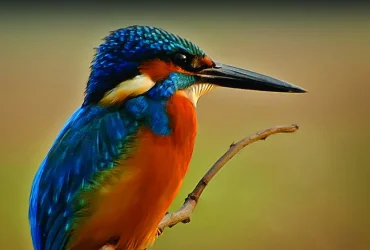 v7i4.203
v7i4.203ISSN: 1800-427X (print)
eISSN: 1800-427X (online)
DOI:10.47605/tapro.v7i4.203
Submitted date: 10 September 2014
Accepted date: 2 April 2015
Published date: 15 August 2015
Pp. 262.
Opportunistic feeding behavior of Nilgiri frog (Zakerana nilgirica)
J.L. Princy*, P. Kannan, P.S. Kumar, S. Nisha, B. Ramakrishnan, A. Veeramani, A. Samson & S. Karthick
*Corresponding author. E-mail: leonaprincymsc@gmail.com
A Dicroglossid frog, Zakerana nilagirica, has been observed opportunistically feeding on a Rhacophorid frog Raorchestes ravii Zachariah et al., 2011. Both species are endemic to the southern Western Ghats. Z. nilagirica is known from only two populations: Wayanad in Kerala and the Nilgiris in Tamil Nadu at 800–1600 m elevations while, R. ravii is known from a single locality, Nilgiris, Tamil Nadu at 1890 m elevation. Z. nilagirica is listed as Endangered.
Section Editor: Robert Stuebing
eISSN: 1800-427X (online)
DOI:10.47605/tapro.v7i4.203
Submitted date: 10 September 2014
Accepted date: 2 April 2015
Published date: 15 August 2015
Pp. 262.
Opportunistic feeding behavior of Nilgiri frog (Zakerana nilgirica)
J.L. Princy*, P. Kannan, P.S. Kumar, S. Nisha, B. Ramakrishnan, A. Veeramani, A. Samson & S. Karthick
*Corresponding author. E-mail: leonaprincymsc@gmail.com
A Dicroglossid frog, Zakerana nilagirica, has been observed opportunistically feeding on a Rhacophorid frog Raorchestes ravii Zachariah et al., 2011. Both species are endemic to the southern Western Ghats. Z. nilagirica is known from only two populations: Wayanad in Kerala and the Nilgiris in Tamil Nadu at 800–1600 m elevations while, R. ravii is known from a single locality, Nilgiris, Tamil Nadu at 1890 m elevation. Z. nilagirica is listed as Endangered.
Section Editor: Robert Stuebing
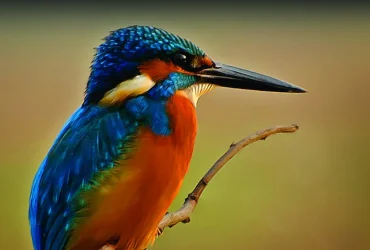 v7i4.202
v7i4.202ISSN: 1800-427X (print)
eISSN: 1800-427X (online)
DOI:10.47605/tapro.v7i4.202
Submitted date: 22 January 2014
Accepted date: 5 February 2015
Published date: 15 August 2015
Pp. 260–261, Pl. 11.
Notes on two Nymphalid butterflies new to Bangladesh
O. Shahadat, T. Ahmed*, A.K. Neogi, T. Khan & M.A. Khan
*Corresponding author. E-mail: shaikot2023jnu@gmail.com
Among the insects, butterflies occupy vital position in ecosystems and their occurrence and diversity are considered as an indicator of the health of any given terrestrial biotope. As herbivorous insects, the distribution of larval and nectar host plants has a distinct impact on the status of butterfly diversity. As a sub-tropical country, Bangladesh is a realm of biological diversity. However, in Bangladesh the butterfly fauna is not well documented. The most distinguished study has been carried out by Larsen. Considering the floral diversity and habitat variations, it is estimated that between 500 and 550 butterfly species should be present in Bangladesh. With the aim to document the diversity and distributions of butterflies, the present study was conducted in an area within the eastern region of Bangladesh.
Section Editor: Jeffrey Miller
eISSN: 1800-427X (online)
DOI:10.47605/tapro.v7i4.202
Submitted date: 22 January 2014
Accepted date: 5 February 2015
Published date: 15 August 2015
Pp. 260–261, Pl. 11.
Notes on two Nymphalid butterflies new to Bangladesh
O. Shahadat, T. Ahmed*, A.K. Neogi, T. Khan & M.A. Khan
*Corresponding author. E-mail: shaikot2023jnu@gmail.com
Among the insects, butterflies occupy vital position in ecosystems and their occurrence and diversity are considered as an indicator of the health of any given terrestrial biotope. As herbivorous insects, the distribution of larval and nectar host plants has a distinct impact on the status of butterfly diversity. As a sub-tropical country, Bangladesh is a realm of biological diversity. However, in Bangladesh the butterfly fauna is not well documented. The most distinguished study has been carried out by Larsen. Considering the floral diversity and habitat variations, it is estimated that between 500 and 550 butterfly species should be present in Bangladesh. With the aim to document the diversity and distributions of butterflies, the present study was conducted in an area within the eastern region of Bangladesh.
Section Editor: Jeffrey Miller
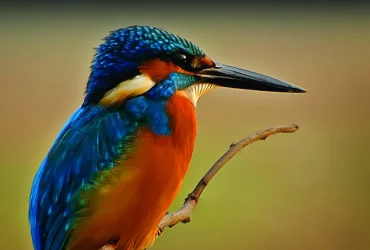 v7i4.201
v7i4.201ISSN: 1800-427X (print)
eISSN: 1800-427X (online)
DOI:10.47605/tapro.v7i4.201
Submitted date: 10 Sepetmber 2014
Accepted date: 2 April 2015
Published date: 15 August 2015
Pp. 258–259.
A note on deformities in the rosy starling (Pastor roseus), Telangana, India
B.L. Narayana*, G. Surender & V.V. Rao
*Corresponding author. E-mail: narayana.laxmi8@gmail.com
On 16th November, 2012, we observed a flock of nine individuals of the rosy starling (Pastor roseus), while conducting faunal surveys at Azmapur village (16.704987°N, 79.039952°E), Nalgonda District, Telangana State, India. The flock was found perching on a Prosopis juliflora tree (Fabaceae). All except three individuals were found with different abnormalities: two individuals had partially bald heads, without feathers on the neck, nape, head and crown regions, three individuals were totally/partially without feathers from the neck up to the crown region. In general, albinism, bill deformity and blindness were found among the individuals.
Section Editor: Varadharajan Gokula
eISSN: 1800-427X (online)
DOI:10.47605/tapro.v7i4.201
Submitted date: 10 Sepetmber 2014
Accepted date: 2 April 2015
Published date: 15 August 2015
Pp. 258–259.
A note on deformities in the rosy starling (Pastor roseus), Telangana, India
B.L. Narayana*, G. Surender & V.V. Rao
*Corresponding author. E-mail: narayana.laxmi8@gmail.com
On 16th November, 2012, we observed a flock of nine individuals of the rosy starling (Pastor roseus), while conducting faunal surveys at Azmapur village (16.704987°N, 79.039952°E), Nalgonda District, Telangana State, India. The flock was found perching on a Prosopis juliflora tree (Fabaceae). All except three individuals were found with different abnormalities: two individuals had partially bald heads, without feathers on the neck, nape, head and crown regions, three individuals were totally/partially without feathers from the neck up to the crown region. In general, albinism, bill deformity and blindness were found among the individuals.
Section Editor: Varadharajan Gokula
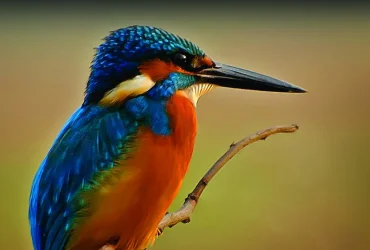 v7i4.200
v7i4.200ISSN: 1800-427X (print)
eISSN: 1800-427X (online)
DOI:10.47605/tapro.v7i4.200
Submitted date: 10 Sepetmber 2014
Accepted date: 19 March 2015
Published date: 15 August 2015
Pp. 255–257, Pl. 10.
On the roosting and mating of Saccolaimus saccolaimus (Chiroptera) in Bangladesh
H. Al-Razi*, O. Shahadat, A.U. Hasan & S.A. Neha
*Corresponding author. E-mail: chayan1999@yahoo.com
Saccolaimus saccolaimus is an emballonurid bat and the only species from the genus Saccolaimus that occurs in South and Southeast Asia. It is medium-sized (FA 63.0–68.0 mm) and has a body covered with chocolate brown to black fur with whitish speckles on the dorsum. The muzzle of the bat is nearly hairless, ears are of moderate size and fluted, the tragus faces outwards, the tail projects a little from the uropatagium and is stout, and a distinctive feature is the gular sac which is prominent in males and less so in females. A foul odour is often associated with these bats. Khan (2001) recorded 31 species of bats from Bangladesh including S. saccolaimus but did not specify distribution. Srinivasulu & Srinivasulu (2012), however, report 37 species from Bangladesh. No account of roosting or mating behaviour of this species has come from Bangladesh although it has been listed as occurring in the country. Here we report our observations of roosting and mating behaviour in S. saccolaimus, a first for the country.
Section Editor: Asoka Yapa
eISSN: 1800-427X (online)
DOI:10.47605/tapro.v7i4.200
Submitted date: 10 Sepetmber 2014
Accepted date: 19 March 2015
Published date: 15 August 2015
Pp. 255–257, Pl. 10.
On the roosting and mating of Saccolaimus saccolaimus (Chiroptera) in Bangladesh
H. Al-Razi*, O. Shahadat, A.U. Hasan & S.A. Neha
*Corresponding author. E-mail: chayan1999@yahoo.com
Saccolaimus saccolaimus is an emballonurid bat and the only species from the genus Saccolaimus that occurs in South and Southeast Asia. It is medium-sized (FA 63.0–68.0 mm) and has a body covered with chocolate brown to black fur with whitish speckles on the dorsum. The muzzle of the bat is nearly hairless, ears are of moderate size and fluted, the tragus faces outwards, the tail projects a little from the uropatagium and is stout, and a distinctive feature is the gular sac which is prominent in males and less so in females. A foul odour is often associated with these bats. Khan (2001) recorded 31 species of bats from Bangladesh including S. saccolaimus but did not specify distribution. Srinivasulu & Srinivasulu (2012), however, report 37 species from Bangladesh. No account of roosting or mating behaviour of this species has come from Bangladesh although it has been listed as occurring in the country. Here we report our observations of roosting and mating behaviour in S. saccolaimus, a first for the country.
Section Editor: Asoka Yapa
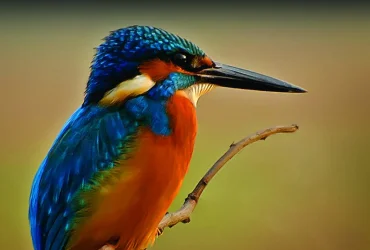 v7i4.199
v7i4.199ISSN: 1800-427X (print)
eISSN: 1800-427X (online)
DOI:10.47605/tapro.v7i4.199
Submitted date: 10 Sepetmber 2014
Accepted date: 19 March 2015
Published date: 15 August 2015
Pp. 253–254.
On the neck seizing behavior of leopard in southern Rajasthan, India
S.K. Sharma* & V.K. Koli
*Corresponding author. E-mail: sksharma56@gmail.com
Leopard or panther Panthera pardus, one of the large cats of the Indian subcontinent, preys on medium to small sized wild animals like langurs and other monkeys, deer, antelope, rodents, birds, reptiles and crabs, and can also take dogs, livestock and poultry. A piece of shell of a unio Parraysia (Radiatula) caerulae was found in the stomach during the post-mortem of a subadult panther in the Jhadol area of Udaipur district during 1994; this species of unio is commonly found in the perennial streams of south Rajasthan. Scat studies reveal that panthers also feed on Tatera indica in Rajasthan. The panther attacks the neck region of its prey, and overcomes or kills it by gripping in the region of the throat and does not leave it till the prey dies, mainly due to suffocation.
Section Editor: Colin P. Groves
eISSN: 1800-427X (online)
DOI:10.47605/tapro.v7i4.199
Submitted date: 10 Sepetmber 2014
Accepted date: 19 March 2015
Published date: 15 August 2015
Pp. 253–254.
On the neck seizing behavior of leopard in southern Rajasthan, India
S.K. Sharma* & V.K. Koli
*Corresponding author. E-mail: sksharma56@gmail.com
Leopard or panther Panthera pardus, one of the large cats of the Indian subcontinent, preys on medium to small sized wild animals like langurs and other monkeys, deer, antelope, rodents, birds, reptiles and crabs, and can also take dogs, livestock and poultry. A piece of shell of a unio Parraysia (Radiatula) caerulae was found in the stomach during the post-mortem of a subadult panther in the Jhadol area of Udaipur district during 1994; this species of unio is commonly found in the perennial streams of south Rajasthan. Scat studies reveal that panthers also feed on Tatera indica in Rajasthan. The panther attacks the neck region of its prey, and overcomes or kills it by gripping in the region of the throat and does not leave it till the prey dies, mainly due to suffocation.
Section Editor: Colin P. Groves
Hubungi Kami
The ultimate aim of the journal is to provide an effective medium for communication of the latest and best scientific information.
Copyright © 2020 Taprobanica. All Rights Reserved
Jasa Pembuatan Website by IKT




